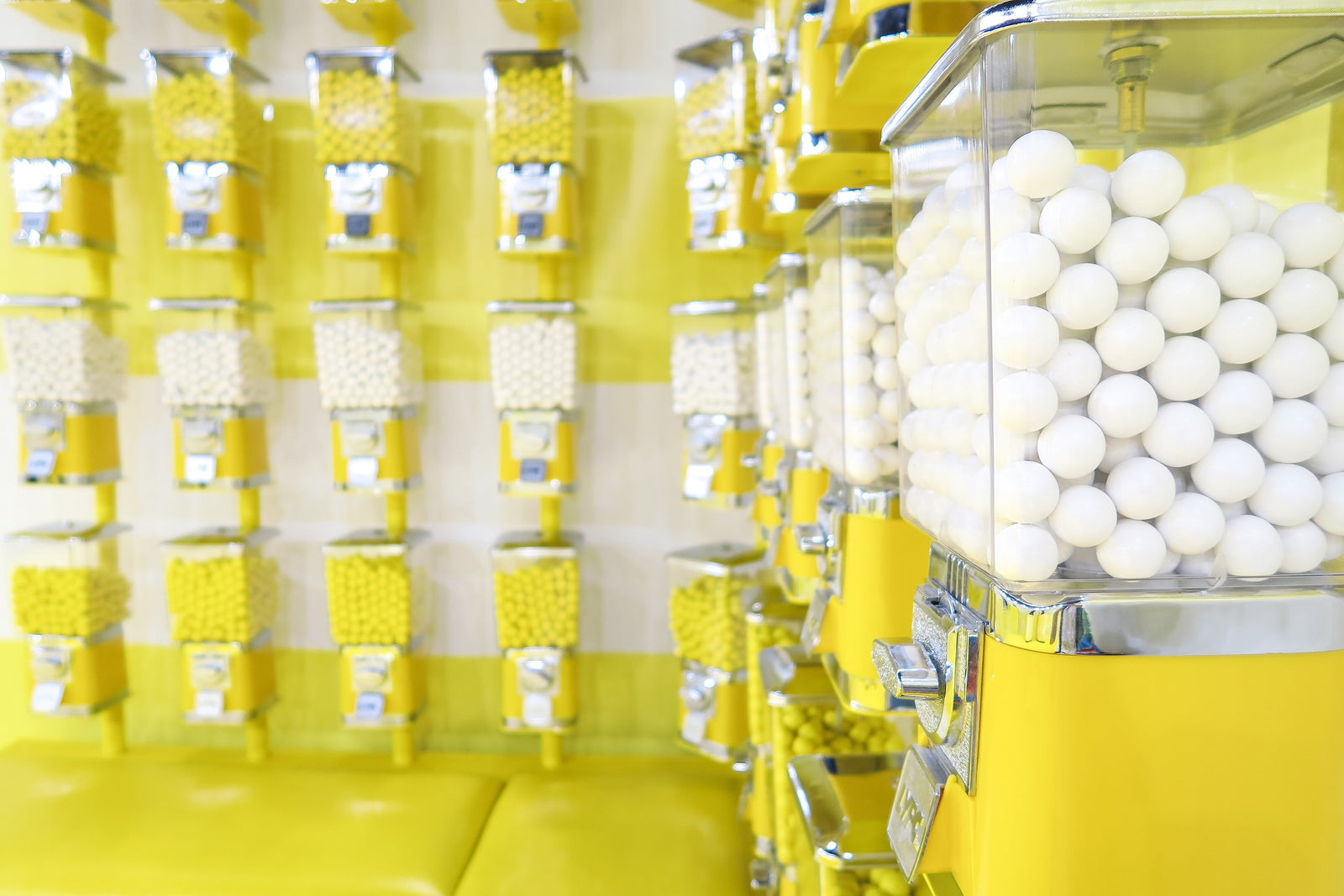🚚 FREE USA SHIPPING ON ORDERS OVER $30! INTERNATIONAL SHIPPING AVAILABLE.
🚚 FREE USA SHIPPING ON ORDERS OVER $30! INTERNATIONAL SHIPPING AVAILABLE.
These plants from around the world contain caffeine
by Tina Sendin 4 min read

When people think of caffeine, they often think of the coffee beverage or coffee beans, which today are indeed the biggest source of the stimulating chemical in the world. But several popular plants worldwide – around 60 species of them – contain caffeine that have been made into delicious food and drinks from antiquity.
Many of the plants below not only contain caffeine but also are good sources of theophylline and theobromine, two other mild stimulants that scientists believe have some beneficial effects. (Theo means “god” in Latin.)
ETHIOPIA: COFFEE’S BIRTHPLACE
Coffee was first produced as a drink in Ethiopia, where it still grows in the wild, spreading throughout the east sometime during the fourth century AD. In fact, some of what the coffee consumers drink today is from coffee beans harvested from wild plants growing in the forest. [1, 2]

The amount of (nearly) purely wild coffee is only about 5 percent of Ethiopia’s output, however. Most Ethiopian coffee comes from gardens, plantations and semi-forested areas.
TEA: another plant source for CAFFEINE
In Asia, caffeine consumption commonly comes in the form of tea. There’s no record of when tea was first used and domesticated, but legend has it that Chinese Emperor Shen Nong was boiling water in his garden when a tea leaf fell into the pot. He tried it and enjoyed its flavor, soon feeling refreshed and invigorated. He also discovered tea’s medicinal properties after this astonishing discovery. [3]

Tea has been big in India too for many centuries, and there a rather grisly legend says Prince Bodhi-Dharma, founder of Japanese Zen, was preaching Buddhism in China around 520 AD: [3]
“Towards the end of his meditation efforts he fell asleep. Upon awaking he was so distraught that he cut off his eyelids. A tea plant sprung up from where his bloody eyelids hit the ground to sanctify his sacrifice.”
Here again, historians think people first chewed tea leaves rather than boiling them to make the iconic drink.
KOKA-KOLA
When you read the term “natural ingredients” on a can of Coke or Pepsi, it very well may contain flavoring from the kola or cola nut seed.
Kola nut, also known as bissy nut and guru nut, grows in Africa, and Central and South America.
There it is used in foods and beverages to serve to guests and in cultural and social ceremonies and also in traditional medicines.
About the size of a chestnut, the kola nut also comes in the form of an extract with 1.5% to 2.5% caffeine used in food flavouring and cola beverages. [4]
Kola nuts help relieve fatigue, ease depression, and treat dysentery and migraine headaches.

COCOA-COLA
Cacao, a tropical plant that first grew wild in South American rainforests, is named Theobroma—which is Latin for “Food of the gods.”
Cacao seeds are another natural source of caffeine. It spread north to Mexico, where in the 1400s the Mexican king Montezuma drank up to 50 cups of cocoa per day, according to legend. [5]

“Cocoa has been a food for humans since as far back as 600 to 200 B.C. when the first hot chocolate drink was made from mashed cocoa seeds. Cocoa is now a major cultivated food crop,” says the Rainforest Alliance. [6]
The African countries of the Ivory Coast and Ghana are primary exporters of cocoa, but many other countries grow the delicious plant.
People consume cocoa in drinks and as chocolate candy and baked goods. Cocoa butter is also made form cacao seeds.
TEA FOR TÚ
We have South America to thank for another invigorating, caffeine-containing drink, namely yerba maté.
Also known as maté, terere, and chimarrão, yerba maté leaves and branches are used to make tea, which contains about 70 mg/100 mL of caffeine (compared with coffee at 57 mg/100 mL). [4]
According to the commercial site Guayaki.com: [7]
“Yerba maté has the ‘strength of coffee, the health benefits of tea, and the euphoria of chocolate’ all in one beverage. Of the six commonly used stimulants in the world: coffee, tea, kola nut, cocoa and guarana, yerba mate triumphs as the most balanced, delivering both energy and nutrition.”
Yerba maté’s leaves, which grow on trees in the rainforest, contain 24 vitamins and minerals, many antioxidants and 15 amino acids.
A 1964 study by the Pasteur Institute and the Paris Scientific Society said in 1964 that “it is difficult to find a plant in any area of the world equal to maté in nutritional value” and it contains “practically all of the vitamins necessary to sustain life.” [7]

Maté has some advantages over coffee, including that it is low in bitter tannins, so it can be brewed longer, which allows the nutrients, caffeine, theophylline and theobromine to concentrate more in the liquid. It is less acidic and therefore does not cause upset stomach.
4-Hour Work Week author Tim Ferriss raves about yerba maté tea, especially in boosting cognitive functions:
guarana seeds: TWICE AS MUCH CAFFEINE
This is another plant – a vine – that first grew wild in South America. Guaraná (Paullinia cupana), also known as Brazilian cocoa, grows as a shrub or woody vine in Brazil. Because Guaraná seeds have the highest caffeine content (2.5%-5%), it’s been used in Brazilian soft drinks since 1909. [4]
Guarana seeds, the extract of which is in supplements and energy drinks, contain more than twice as much caffeine as coffee.
“Bombastically named energy drinks such as Full Throttle, Monster, Red Bull and Rockstar all contain the herbal supplement guarana. The compound is also found in over-the-counter weight loss products, and it’s been marketed as an aphrodisiac.” [8]
If you see guarana on an ingredient list, know that you are in for a big jolt of caffeine when you consume it.
A NORTH AMERICAN TEA
Most of the continents in the World have caffeinated plants. But what about North America?
“North America also has a native caffeinated plant known as cassina, youpon, the Christmas berry tree, or the North American Tea plant, which grows from Virginia, south to Florida, and westward along the Gulf coast into Texas. During the Civil War, when coffee and tea [were] scarce due to blockades, and also after World War I coffee [when] was scarce, cassina became a popular substitute and was the focus of Department of Agriculture projects to cultivate a domestic caffeine source.” [9]
However, it appears that not too many people drink cassina tea today.
Also in Viter Energy Blog

Can caffeine help with ED?
by Mark Miller 3 min read
Erectile dysfunction. In combination, those are two of the ugliest words known to man. But can caffeine help you get it up?
Science hasn't found the definitive answer to this question, but one study concluded that fewer men who consume caffeine have problems performing. The study said:
Caffeine intake reduced the odds of prevalent ED, especially an intake equivalent to approximately 2-3 daily cups of coffee (170-375 mg/day). This reduction was also observed among overweight/obese and hypertensive, but not among diabetic men. Yet, these associations are warranted to be investigated in prospective studies

Caffeine while breastfeeding? Go ahead, it's OK
by Mark Miller 4 min read
Many breastfeeding mothers wonder if it's OK to take caffeine. In fact, many nursing mothers just avoid caffeine in case it would keep their babies fussy, jittery and awake.
The answer is yes, you can take caffeine while breastfeeding, as long as you don't go over about 300 mg a day.
It's an important question because caffeine is in so many products, and taking coffee, tea, or soda is such a common ritual.
And breastfeeding mothers may be tempted to take caffeinated products because they are deprived of sleep by their newborns' odd sleep schedule.

The surprising benefits of chewing gum
by Mark Miller 5 min read
You might think gum chewing is an activity with little or no benefits besides the pleasure and flavor, but think again. Chewing gum has several benefits.
In addition to freshening your breath, sugar-free gum can help prevent cavities and contribute to overall oral health. But that's just the beginning.

